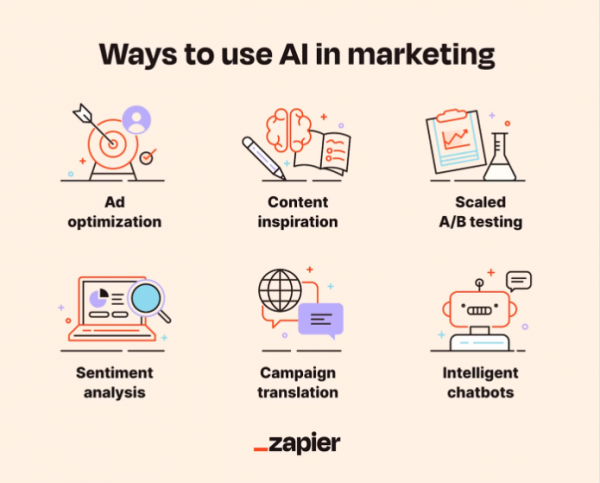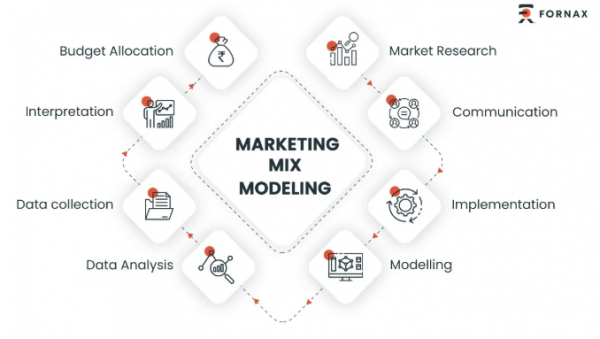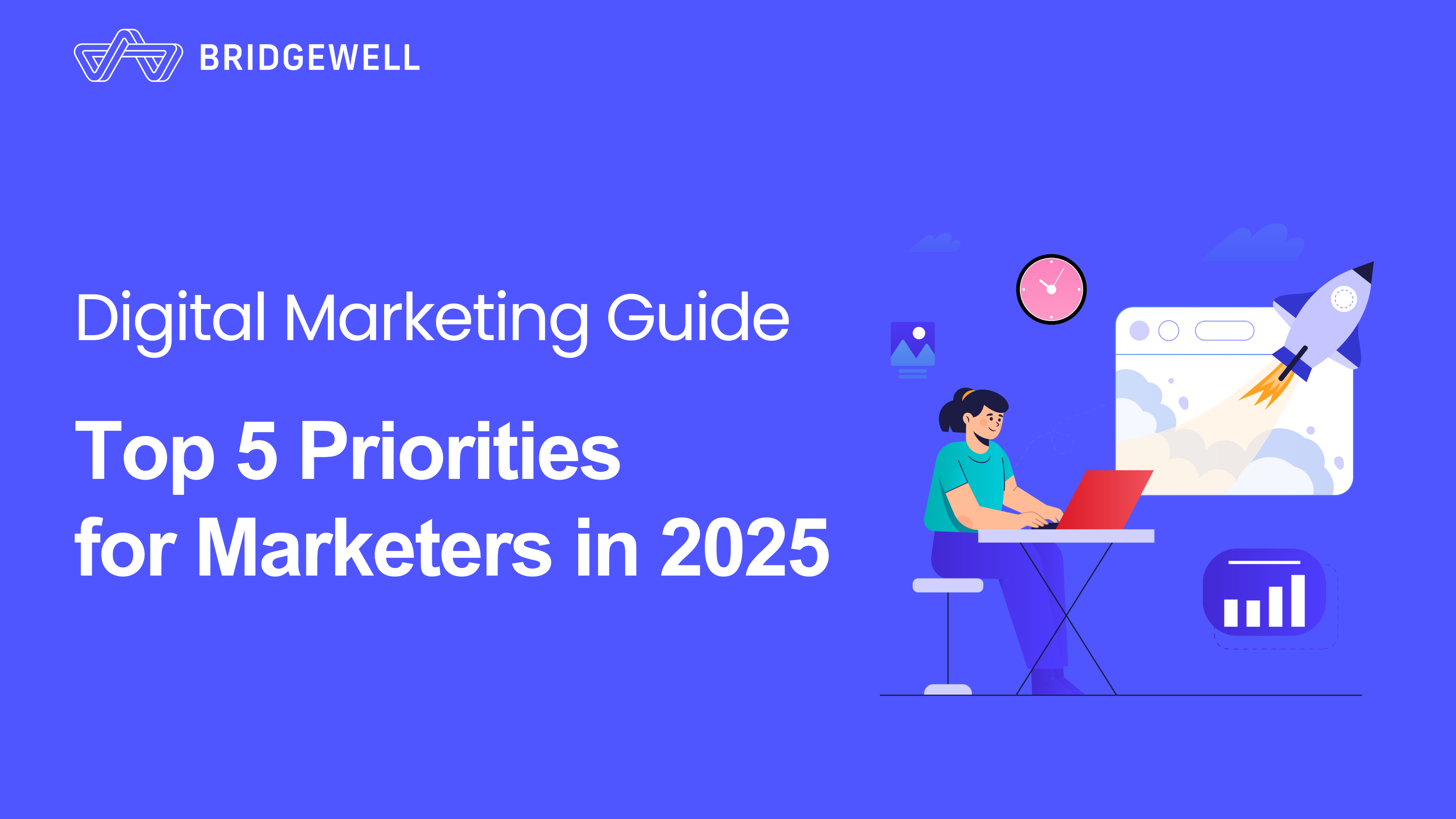The future of advertising and marketing lies in a thoughtful, holistic approach—one that addresses today’s complexities while laying the groundwork for future growth.
5 Key Marketing Priorities for 2025
Want your brand to stand out in 2025? Master these key trends—from smarter AI applications to greater data transparency—to stay ahead in the game!
The marketing landscape is evolving faster than ever. To stay competitive, it’s not about doing more, but about doing the right things. In 2025, success will be defined by smarter strategies and more meaningful results. Whether it’s redefining success metrics or making privacy protection a core strategy, every step matters.
With increasing competition and a more complex advertising ecosystem, marketers can’t afford to be reactive—they need to take the lead. These five key strategies will help brands navigate change, adapt to market shifts, and lay the foundation for long-term success in 2025 and beyond.
–
1. Integrate AI into Your Marketing Workflow

–
AI is transforming the way marketers work—making decisions faster, smarter, and more effective. It’s not just about automation; it’s about helping teams focus on strategy, creativity, and impact.
Streamline Planning, Execution & Insights
Automate repetitive tasks like audience segmentation, content recommendations, and performance analysis, freeing up time for big-picture strategy.
Unlock Insights to Optimize Performance
Analyze consumer behavior and campaign results to identify what works and why. Use these insights to refine your marketing strategy across channels, content, and audience engagement.
Deliver Tailored Experiences
Create personalized messages and content variations that align with different devices, platforms, and audience preferences. By considering demographics, lifestyles, and behavior patterns, you can craft experiences that truly resonate and drive impact.
–
2. Redefining Media Mix Modeling & Performance Measurement

Credit: Fornax
–
Traditional performance metrics no longer capture the complexity of today’s consumer journey. Rethinking how success is measured allows marketers to focus resources on what truly drives value.
Modernizing Media Mix Modeling (MMM)
A modern media mix shouldn’t just measure efficiency and scale—it should also account for emerging channels like podcasts and digital out-of-home (DOOH) advertising. Additionally, factors such as time spent, attention, and overall consumer experience should be considered.
Redesigning Measurement Frameworks
Develop measurement frameworks tailored to specific goals, setting clear KPIs for different stages of the customer journey. These KPIs should align with actions that drive results, such as brand awareness, engagement, and conversions. It’s also crucial to account for external factors that may influence performance insights and adjust strategies accordingly.
Adopting Multi-Touch Attribution
Use multi-touch attribution models to understand how different channels, touchpoints, and strategies contribute to outcomes. These insights can help optimize media allocation and improve resource distribution.
Media Mix Modeling (MMM) vs. Attribution: What’s the Difference?
Both Media Mix Modeling (MMM) and Attribution Analysis are marketing analytics methods designed to optimize marketing channels—but they address different questions.
Attribution Analysis: Tracking Individual User Behavior
The key question in attribution is: “Which of my marketing efforts is performing best?”
Attribution tracks individual user behavior to determine which marketing touchpoints (ads, social posts, emails, etc.) drive conversions (e.g., purchases).
Limitation: Attribution cannot measure incrementality, meaning it tells you which channel led to a conversion but doesn’t reveal whether the conversion would have happened anyway, without the ad’s influence.
Media Mix Modeling (MMM): Evaluating Overall Marketing Impact
The key question in MMM is: “What would happen to my business if we stopped advertising altogether?”
Instead of tracking individual users, MMM assesses the overall impact of various marketing channels, considering online and offline marketing, seasonality, and economic trends. Unlike attribution, MMM doesn’t rely on user-level data (e.g., cookies). Instead, it uses historical data to model and predict the best ways to allocate marketing budgets.
Key Takeaways: MMM vs. Attribution
- Attribution focuses on individual users and helps identify which touchpoints (ads, emails, social posts) drive conversions—but it doesn’t measure incrementality.
- MMM takes a holistic approach, evaluating the overall impact of marketing efforts by considering external factors like offline marketing, seasonality, and economic trends. It’s particularly useful for budget optimization and doesn’t rely on cookies.
- AI and machine learning have made MMM models faster and more accurate, but human oversight is still necessary for adjustments and optimization.
By understanding and leveraging both MMM and attribution, marketers can gain a more comprehensive view of performance and make data-driven decisions that maximize impact.
–
3. Shifting from Efficiency to Value
Focusing solely on efficiency does not foster meaningful connections with your audience. Instead, prioritize elements that drive long-term loyalty, brand preference, and sustainable growth.
Invest in Quality Over Quantity
Choose high-quality content, platforms, and partners that build trust and engagement, rather than simply opting for low-cost or generic alternatives.
Redefine KPIs and Success Metrics
Measure success based on engagement, customer loyalty, time spent, and meaningful actions that drive real outcomes. Establish benchmarks tailored to different marketing channels, audiences, devices, and objectives.
Build Skilled Teams and Strong Partnerships
Develop experienced teams and strategic partnerships that balance short-term results with long-term growth. Invest in top talent within your organization and agency partners to ensure the depth needed to craft impactful strategies.
–
4. Implementing a Privacy-First Media and Data Strategy
Privacy is no longer just a compliance requirement—it is a cornerstone of building trust and fostering long-term relationships. Marketers must prioritize privacy at every stage of their strategy.
As digital marketers, our goal is to create personalized customer experiences while respecting user privacy and data security. However, with the rise of privacy regulations like GDPR (General Data Protection Regulation) and CCPA (California Consumer Privacy Act), digital marketing has become more complex. These regulations have significantly impacted how data is collected and used, posing new challenges for marketers.
Understanding Key Privacy Regulations
GDPR, which took effect in May 2018, applies to any company processing the personal data of EU citizens, regardless of where the company is based. The regulation’s core objective is to give individuals greater control over their data and requires businesses to obtain explicit user consent before collecting, storing, or using personal information.
CCPA, enacted in January 2020, is a similar privacy law that applies to companies collecting data from California residents with annual revenues exceeding $25 million. These regulations have far-reaching implications for digital marketing, especially in how data is collected and utilized, requiring marketers to adjust their strategies for compliance.
Focus on Data Minimization
Collect only the data that is truly necessary and ensure it is responsibly handled and deleted within a reasonable timeframe. Implement proper data management practices across the organization.
Conduct Data Audits
Comprehensive data audits are essential to ensure compliance with privacy regulations. Businesses should start by identifying what data is collected, how it is used, and where it is stored. Creating a detailed data inventory—including customer information, employee records, and supplier data—can help provide clarity. Additionally, mapping data flows within the organization can help visualize how data moves internally and identify potential risk areas. These steps allow companies to better understand their data practices and make necessary adjustments to meet privacy requirements.
Transparent Communication to Build Trust
Clearly explain how data is collected and used. A simple and transparent consent process not only demonstrates respect for consumer privacy but also fosters positive interactions.
Stay Ahead of Regulatory Requirements
Regularly assess tools, platforms, and partners to ensure they meet privacy standards such as GDPR and CCPA. Proactively maintaining compliance helps protect brand reputation and reduces the risk of penalties.
–
5. Ensuring Data Transparency and Quality
Good decisions come from good data, but inconsistencies and incomplete information can create obstacles. Now is the time to improve how data is collected, shared, and utilized.
Standardize Internal Data
Review and refine the data you collect to ensure accuracy, consistency, and usability. Standardize and unify data across different platforms to establish a reliable foundation for analysis.
Collaborate with Partners
Align with publishers, platforms, and industry organizations to ensure consistency in data and measurement methodologies. Share feedback and insights with partners to improve transparency and bridge data gaps.
Advance Industry Standards
Support industry guidelines and standards set by organizations such as the Interactive Advertising Bureau (IAB), IAB Tech Lab, and the Media Rating Council (MRC). Ensure the data you receive is transparent, comparable, and compliant with industry requirements—ideally certified by trusted accreditation bodies.
–
Build Your Marketing Strategy for 2025
The future of advertising and marketing lies in a thoughtful, holistic approach—one that addresses today’s complexities while laying the groundwork for future growth. By prioritizing these five key areas, you can establish a smarter decision-making framework, foster deeper connections, and build a brand that thrives in an ever-evolving market.
Overlooking any of these priorities could hinder performance, weaken trust, or create gaps that impact long-term success. The most successful brands in 2025 will treat these core areas as interconnected strategies, using them to adapt quickly, drive loyalty, and fuel sustainable growth.
The time to act is now. Start small, but think big—because every step you take today will determine whether you lead or lag in this increasingly competitive and unpredictable industry. Which priority will you focus on first?
